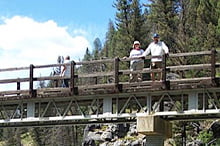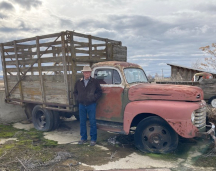No products in the cart.
Dagger Falls

A Long-Ago Frenzy of Fishing
By Rob Greenfield
Photos courtesy of Rob Greenfield
My twin brother Rick and I had no idea what to expect as we listened to Dad’s friend Jackson, the local mechanic, persuade him to take a fishing trip into backcountry for a sight that, according to him, everyone who could get there should see at least once in a lifetime. It entailed an eight-to-ten-mile hike into the Middle Fork of the Salmon River to fish at Dagger Falls.
Such a long walk was not our idea of a good time and, more important, not Dad’s. He was a stockman, a row crop farmer, a horseman, and hunter—but not a fisherman. Farming in the Huston community, halfway between Caldwell and the Snake River, we grew quarter horses, hops, seed crops and feed crops, and we fattened seventy or so head of livestock. The only way Dad could justify Jackson’s fishing trek was on horseback.
This was the summer of 1958, when Rick and I were eleven years old. We loaded five horses into our 1948 twelve-foot dualed Ford F4 stock truck. Tightly packed into the truck bed were a stallion for Dad and mares for Rick and me, both of which were nursing, so we had to bring their foals as well.
This content is available for purchase. Please select from available options.
Purchase Only
Purchase Only

